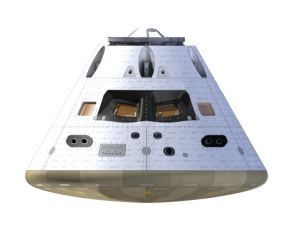Proving systems in the proving ground?
NASA is working on the Journey to Mars, but an important step before going to Mars will take place in the proving ground. This is an area of space around the moon where NASA will test America’s next spacecraft, Orion. This area is known as cislunar space. The Orion spacecraft will carry humans farther into deep space than they’ve ever gone before and return them safely to Earth.
Orion will be launched into space in 2018 on its first integrated flight with NASA’s new rocket, Space Launch System (SLS). This first integrated flight will not carry humans onboard, but the next flight of Orion will carry a crew.
The first crewed flight of Orion will carry humans into the cislunar proving ground. Their mission? Make sure the systems of the Orion spacecraft are operating as designed in the deep space environment.
There will be a series of missions carrying crews into the cislunar environment, and the first is targeted to launch as early as 2021. In this area around the moon, crew can build and test systems that will be needed to prepare for missions to Mars.
Image credit: NASA
What does the mission plan look like for this first crewed mission? It’s built around a profile known as a multi-translunar injection (MTLI) or multiple departure burns. This profile includes a free return trajectory from the moon. Put simply, Orion will periodically fire its engines while circling twice around the Earth. This will enable the spacecraft to build up enough speed to push it toward the moon before it loops back to the Earth.
After launching from NASA’s Kennedy Space Center in Florida, Orion’s two orbits around the Earth will make sure its systems are working properly. The upper stage of SLS will still be attached to Orion. Orion will orbit Earth in a circular orbit with an altitude of 100 nautical miles. Getting the spacecraft into orbit around the planet (orbital insertion) will be accomplished by a move, or burn.
After its first orbit, Orion will be placed in a highly elliptical orbit around Earth known as the partial translunar injection. This will be achieved using the exploration upper stage (EUS) and the four RL-10 engines of SLS. This elliptical orbit will take Orion between 500 and 19,000 nautical miles above Earth.
After traveling along the two orbits attached to Orion, the EUS will separate from the crew vehicle. The crew will then test Orion’s critical systems. They’ll accomplish this by taking data from their 24-hour elliptical orbit around Earth. Next, they’ll use the service module, attached onto the crew module, to complete the translunar injection (TLI) burn. This will be the second and final burn, sending Orion toward the moon. The service module provides power, propulsion and life support systems to the Orion crew vehicle.
The mission profile looks like this:
Image credit: NASA
To get back to Earth, Orion will be sent around the backside of the moon due to the translunar injection. The path taken before the crew returns to Earth will be a figure eight. No propulsion will be required here; the gravity of the moon will slingshot Orion back to Earth. This is the free return part of the trajectory.
This first crewed mission will last between 8-21 days.
On the flight of Orion without crew in 2018, testing will be carried out in a different kind of orbit. Orion will be in a distant lunar retrograde orbit, or DRO. This orbit will allow for the testing of maneuvers and environments that Orion will experience on future missions.
Orion will enable NASA to send humans to multiple deep space destinations. The crew vehicle and the rocket that launches it, SLS, are essential components in NASA’s Journey to Mars.
Learn more about Orion and the Journey to Mars at NASA.gov.


